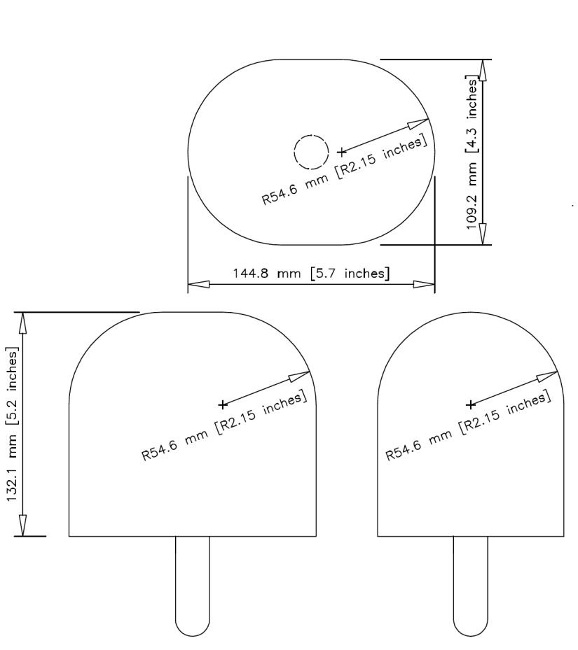Playpens Regulations (SOR/2018-186)
Full Document:
- HTMLFull Document: Playpens Regulations (Accessibility Buttons available) |
- XMLFull Document: Playpens Regulations [139 KB] |
- PDFFull Document: Playpens Regulations [1489 KB]
Regulations are current to 2024-11-26 and last amended on 2022-12-19. Previous Versions
SCHEDULE 6(Section 15)Tests for Loops
Playpens and Sleep Accessories
1 The following method is to be used for testing a loop that is formed by a cord, strap or other similar item of a playpen or sleep accessory:
(a) assemble the playpen or sleep accessory according to the manufacturer’s instructions, omitting any attachments that could interfere with the conduct of the test;
(b) if the product is a sleep accessory, place the accessory in the manufacturer’s recommended use position on the playpen or fix it in that position to the playpen;
(c) select a loop to be tested and, while holding the loop open to its maximum diameter, attempt to pass the small head probe illustrated in the figure to this schedule through the loop;
(d) if a loop that allows the passage of the probe is outside the occupant retention area, apply a force of 22 N to the loop to attempt to pull it into the occupant retention area;
(e) release the loop and observe whether the loop remains inside the occupant retention area; and
(f) repeat the steps set out in paragraphs (c) to (e) for all the other loops.
Change Table Accessories
2 The following method is to be used for testing a cord, strap or other similar item of a change table accessory that is designed to restrain a child:
(a) assemble the playpen and the change table accessory according to the manufacturer’s instructions, omitting any attachments that could interfere with the conduct of the test;
(b) place the change table accessory in the manufacturer’s recommended use position on the playpen or fix it in that position to the playpen;
(c) if the change table accessory has at least one opening, select a cord, strap or other similar item to be tested and, with it unfastened, apply a push or pull force to it of at most 111 N and attempt to pass it into the occupant retention area through the opening and, if a loop forms inside the occupant retention area, hold the loop open to its maximum diameter and attempt to pass the small head probe illustrated in the figure to this schedule through the loop;
(d) repeat the step set out in paragraph (c) for all the other cords, straps or similar items;
(e) if two cords, straps or other similar items pass into the occupant retention area, adjust them to their greatest length and fasten them together according to the manufacturer’s instructions to form a loop and, while holding the loop open to its maximum diameter, attempt to pass the small head probe illustrated in the figure to this schedule through the loop;
(f) unfasten the cords, straps or other similar items and pull them from the opening referred to in paragraph (c);
(g) repeat the steps set out in paragraphs (c) to (f) for all the other possible combinations of openings and cords, straps or other similar items;
(h) adjust the cords, straps or other similar items to their greatest length, fasten them together and then drape the loop that is formed over the side of the change table accessory so that it hangs inside the occupant retention area and, while holding the loop open to its maximum diameter, attempt to pass the small head probe illustrated in the figure to this schedule through the part of the loop that is inside the occupant retention area;
(i) repeat the step set out in paragraph (h) for all the other possible combinations of cords, straps or other similar items;
(j) repeat the step set out in paragraph (c) for fastened cords, straps or other similar items; and
(k) repeat the step set out in paragraph (j) for all the other possible combinations of openings and fastened cords, straps or other similar items.
Figure — Small head probe

- Date modified: